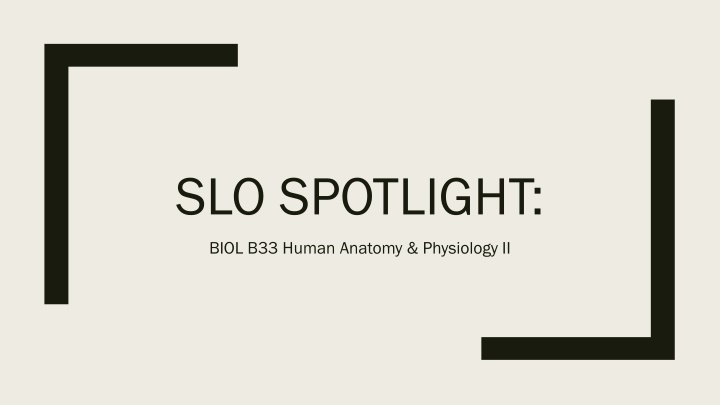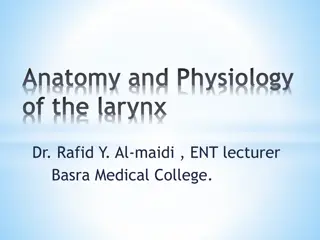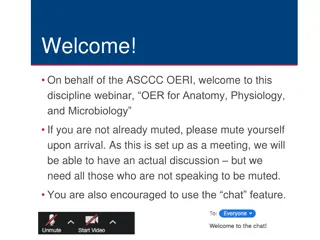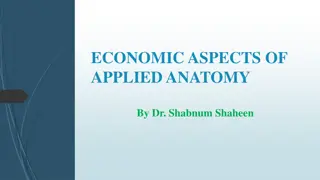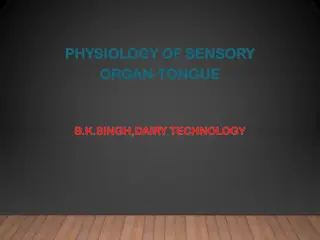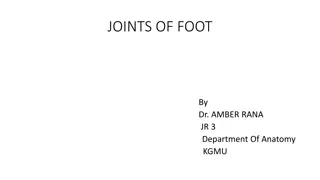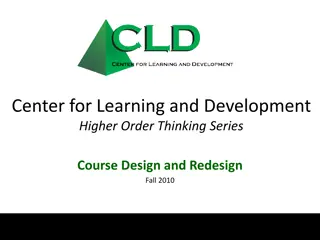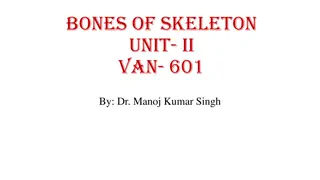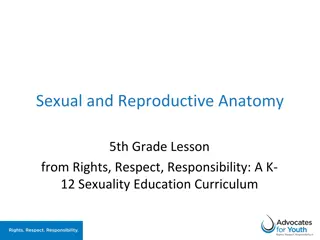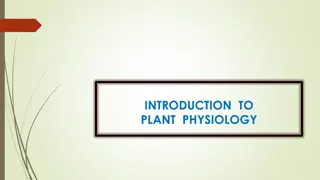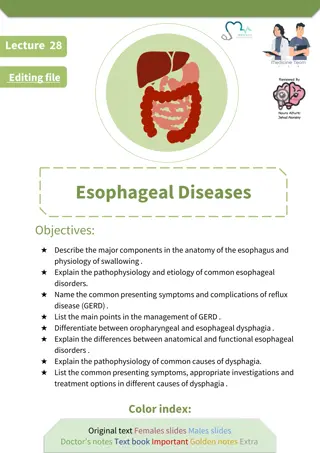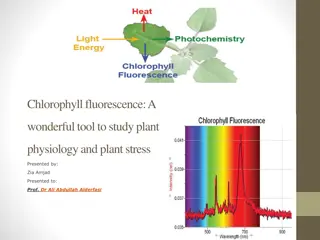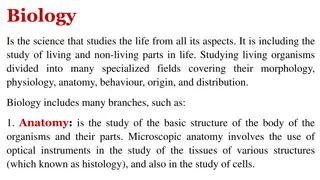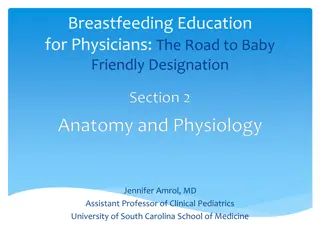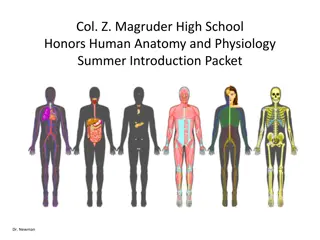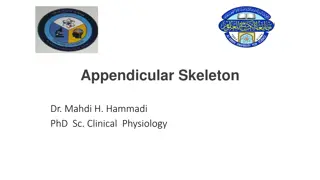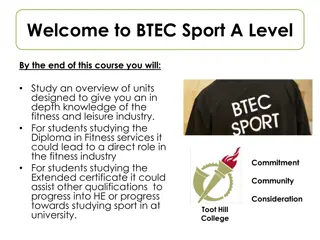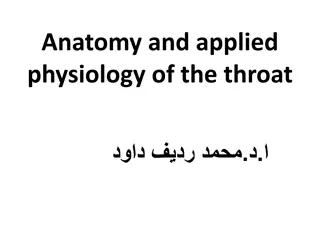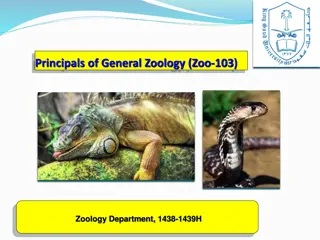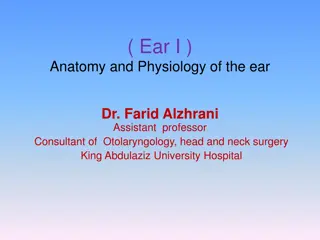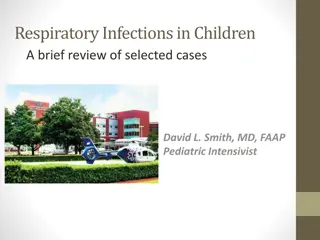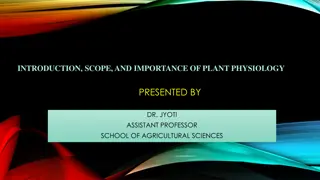Human Anatomy & Physiology II Course Overview
This course covers the structure, function, integration, and homeostasis of the human body at various levels, preparing students for careers in allied health fields. Topics include major organ systems, terminology use, interrelationships, technology application, and critical thinking skills development.
Download Presentation

Please find below an Image/Link to download the presentation.
The content on the website is provided AS IS for your information and personal use only. It may not be sold, licensed, or shared on other websites without obtaining consent from the author.If you encounter any issues during the download, it is possible that the publisher has removed the file from their server.
You are allowed to download the files provided on this website for personal or commercial use, subject to the condition that they are used lawfully. All files are the property of their respective owners.
The content on the website is provided AS IS for your information and personal use only. It may not be sold, licensed, or shared on other websites without obtaining consent from the author.
E N D
Presentation Transcript
SLO SPOTLIGHT: BIOL B33 Human Anatomy & Physiology II
BIOL B33: Human A&P II Biology B33 is the second part of a two-semester integrated anatomy and physiology sequence that covers the structure, function, integration and homeostasis of the human body at the cellular, tissue, organ, organ system and organism level The course includes the integumentary, skeletal, muscular, nervous, sensory, cardiovascular, lymphatic, immune, respiratory, urinary, digestive, endocrine, and reproductive systems. This series meets the diverse needs of students seeking careers in such allied health fields as nursing, pharmacy, and physician's assistant.
BIOL B33: Human A&P II 1. Demonstrate the use of proper anatomical and physiological terminology to identify and describe the location, structure, and function of all major organs and organ systems covered. 2. Demonstrate an understanding and critically assess the interrelationships between structure and function at the molecular, cellular, tissue, organ, organ system, and organismal levels in the human body. 3. Demonstrate knowledge and understanding of the contribution of tissues, organs, and organ systems to the maintenance of homeostasis and identify causes and effects of selected homeostatic imbalances. 4. Describe and/or demonstrate proper use of technology, tools, medical tests, and laboratory equipment (such as microscopes, models, dissections tools, general lab ware, ECGs, simulations, etc.) that are commonly used to study anatomy and physiology and the human body. 5. Demonstrate the use of critical thinking and scientific problem-solving skills (including but not limited to inferring, integrating, synthesizing, and summarizing) to analyze data, extrapolate inferences, and draw conclusions as they relate to selected anatomical and physiological concepts and clinical examples.
How do we assess BIOL B33 outcomes? - Summative assessment of 5 questions on final exam. Each link to one SLO. - Similar questions used for final exam in BIOL B32 (same outcomes) - Reassessed in BIOL B33 on same outcomes
The assessment SLO 1 1. Demonstrate the use of proper anatomical and physiological terminology to identify and describe the location, structure, and function of all major organs and organ systems covered.
The assessment SLO 2 2. Demonstrate an understanding and critically assess the interrelationships between structure and function at the molecular, cellular, tissue, organ, organ system, and organismal levels in the human body.
The assessment SLO 3 3. Demonstrate knowledge and understanding of the contribution of tissues, organs, and organ systems to the maintenance of homeostasis and identify causes and effects of selected homeostatic imbalances.
The assessment SLO 4 4. Describe and/or demonstrate proper use of technology, tools, medical tests, and laboratory equipment (such as microscopes, models, dissections tools, general lab ware, ECGs, simulations, etc.) that are commonly used to study anatomy and physiology and the human body.
The assessment SLO 5 5. Demonstrate the use of critical thinking and scientific problem-solving skills (including but not limited to inferring, integrating, synthesizing, and summarizing) to analyze data, extrapolate inferences, and draw conclusions as they relate to selected anatomical and physiological concepts and clinical examples.
RESULTS % Met expectations Spring 2022 99.2% 36% 81.6% 78.4% 78.4% Fall 2022 Summer 2023 SLO 1 SLO 2 SLO 3 SLO 4 SLO 5 98.7% 32.5% 80% 66.7% 77.3% 90.6% 62.5% 68.8% 81.3% 81.3%
Reflection More exposure/practice with SLO 2 and 3 Adding more similar questions within homework assignments and labs Given more practice problems/exam How do we get faculty buy-in of more practice without compromising rigor?
